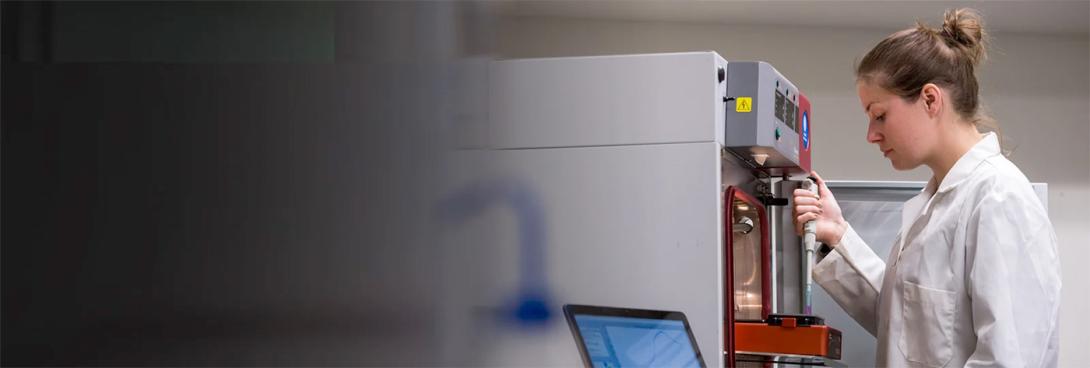
Applied BioPhysics is a biotechnology company that manufactures and sells biosensor lab instruments based on a technology called electric cell-substrate impedance sensing (ECIS), which uses electricity to study complex cell behavior in vitro.
The ECIS method's automated cell-monitoring capability features real-time quantitative measurements and uses standard tissue culture and media. The company markets its family of devices to pharmaceutical companies, universities, research labs, medical schools, and biotech companies. Instruments are located throughout the United States and in Asia and Europe.
The ECIS® Zθ is Applied BioPhysics' most advanced monitoring device that uses the complex impedance spectrum to provide unprecedented sensitivity and detailed results for a wide range of applications, including cancer research, toxicology testing, and drug discovery. The instrument has 96 wells for parallel testing and for high throughput applications. A smaller version of the system, with 16 wells, is also available.
Measuring cellular impedance by using non-invasive levels of alternating current (AC) allows the systematic study of cell attachment, growth, morphology, function, and motility. The technology doesn't require fluorescent or radiolabeled materials. Data can be taken as often as every quarter-second to follow a cell's behavior. The device's software manages all data acquisition, storage, and analysis.
"By electrically eavesdropping on living cells, we can examine and measure them over time," says Charlie Keese, president, and company co-founder. "No other method accomplishes this degree of analysis."
Applied BioPhysics was founded in 1991 by Keese, a biologist, and Ivar Giaever, a Nobel Prize-winning physicist. They invented the technology while working together at GE Global Research and Development. They further developed and commercialized the technology at Rensselaer Polytechnic Institute, where the two researchers subsequently served as faculty members. The company, which has nine employees, has been at the Rensselaer Technology Park Campus since 2005.
"Being in the Technology Park from a business standpoint has allowed our company to grow, with opportunities to expand, by providing ample space and a central location from which to do business," says Christian Dehnert, the company’s vice president of marketing.
In addition to its flagship device, Applied BioPhysics has begun to sell a line of single-application ECIS devices. The first one, called the ECIS TEER24, is available now and monitors the permeability of endothelial and epithelial cell layers in tissue culture. Another simplified, lower cost device that the company is developing will be devoted to general research on cell migration.
In the ECIS device, cells are grown on gold-film electrodes that are placed at the bottom of each culture chamber. A constant weak AC current is applied over a range of frequencies, and the impedance of the electrodes is measured over time.
As the cell layers grows, the cell membranes, which act as insulators, oppose the flow of the AC signal. Thus, as more cells divide and cover the electrodes, the impedance increases. ECIS can provide specific information, for example, on how rapidly cells are dividing in tumor cultures.
"If a newly developed drug is working to reduce the number of tumor cells, the impedance will not increase as fast,” says Dehnert. "On the other hand, if a drug is highly toxic and results in cellular death, then the impedance will suddenly drop because the cells are no longer blocking the current."
ECIS also provides critical information on how cancer cells metastasize. "As the tumor cell wiggles in between the normal layer of cells," Keese says, "the morphology of the normal cell layer changes, and ECIS monitors and measures that."